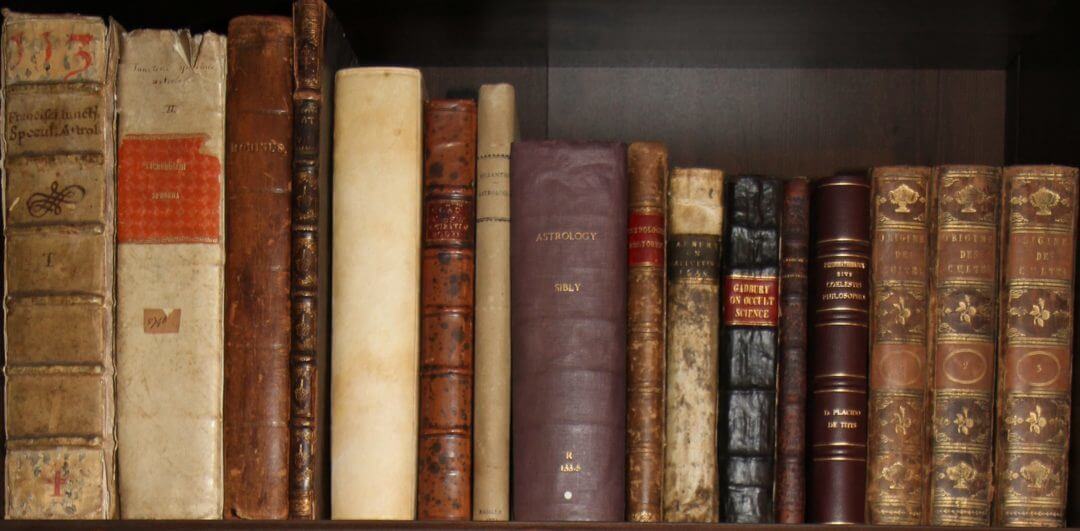[Lilly, William] ‘Mr. Lilly’s History of his Life and Times: Written by Himself. Published from the Original Manuscript, reposited in the Ashmolean Musaeum at Oxford. To which is subjoined, The True History of King James I. and King Charles I. by Mr. Lilly[1]‘ [Second overall but first combined edition] – Printed for E. Curll, over-against Catherine-street in the Strand; J. Pemberton, in Fleet-street; and W. Taylor, in Pater-noster-Row, London, 1721.
Leather boards (heavily worn at corners and edges, with leather peeling from boards in places) rebacked with cloth spine. (Lower half of rear hinge internally split.) Lilly’s History: (Leaf comprising pp. 27-8 slightly damaged by a small burn hole, affecting parts of several lines of text.) [1 leaf] + [2] + 116 pp. Several Observations: vii + 108 pp
[1] With separate subtitle page to main p. 1 of the second part: ‘Several Observations Upon the Life and Death of Charles Late King of England’. It is possible though unclear that a fuller title page may be missing prior to the prefatory pages to the second part of the volume. The running header is ‘Observations on the Life and Death of King Charles’, and there is notably no mention of King James in either header or subtitle despite the promise in the overall title page for the volume
About this Book Scan
Carefully scanned in full colour from our original printing purchased at auction in the 2000s
William Lilly’s autobiography, Mr. William Lilly’s History of His Life and Times, was first published posthumously in a standalone edition in 1715, 34 years after his death. Six years later, it was reprinted in combination with his tract Several Observations Upon the Life and Death of Charles Late King of England. Both texts are reproduced in our scan of the 1721 edition.
NB: Our original edition has internal damage to the leaf comprising pp. 27-8. The affected paragraphs have been replaced in modern typing in a page inserted in the file between our scans of pages 27 to 28, so that the text on both pages can be completely read and understood.
